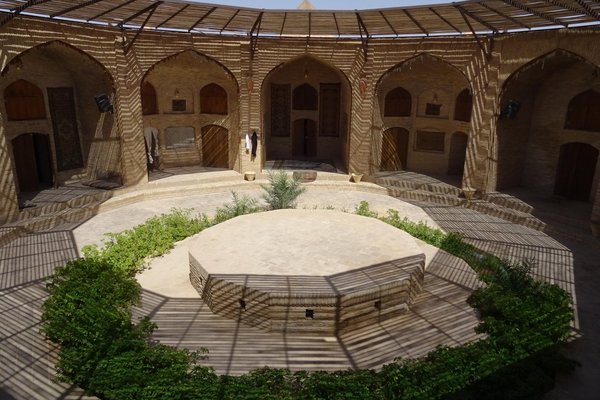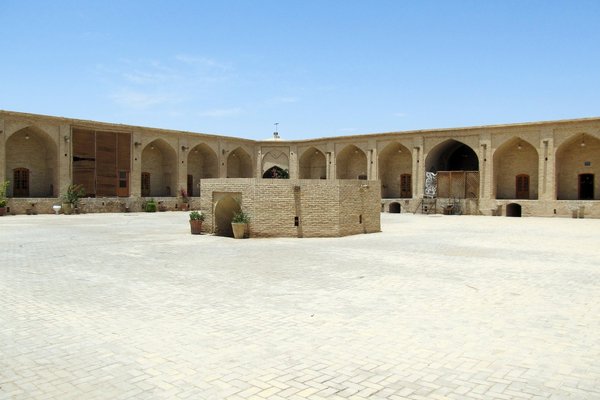Iran
Persian Caravanserai
The Persian Caravanserai represent the way of travel in desert regions before modern roads and railways existed.
The Caravanserai were built as road stations along trade routes (such as the Silk Road) and pilgrimage routes. Their design evolved over the centuries, from the Sassanian to the Qajar period, and also varied due to geographic setting.
Community Perspective: This is a serial site comprising 54 historic roadside inns from all over Iran. An easy one to visit lies in Bisotun, next to the eponymous WHS.
Site Info
Official Information
- Full Name
- The Persian Caravanserai (ID: 1668)
- Country
- Iran
- Status
-
Inscribed 2023
Site history
History of Persian Caravanserai
- 2023: Advisory Body overruled
- ICOMOS advised Referral, mostly for the selection of sites. 2 of the 56 proposed locations were left out, as well as criterion iv.
- 2023: Inscribed
- Inscribed
- Type
- Cultural
- Criteria
- ii
- iii
Links
- UNESCO
- whc.unesco.org
All Links
UNESCO.org
- whc.unesco.org — whc.unesco.org/
Community Information
- Community Category
- Human activity: Transport and Trade
Travel Information
Exact locations inscribed twice (or more)
"(...) the Bisotun caravanserai is included within the World Heritage property of Bisotun" (AB …
Red Zone Travel Advisory
Teheran Hotspot
Recent Connections
-
Timurid Architecture
Examples of caravanserais built under T…
-
Tetrapylon
Deyr-e Gachin Caravanserai: "The space …
-
Spice Route
"ICOMOS notes that the nomination dossi…
Connections of Persian Caravanserai
- Individual People
-
-
Ibn Battuta
Izadkhast Caravanserai: "Ibn Battuta 1350 A.D is one of the first historians who mentioned this caravanserai in this station and introduces the Robat building as one of the works of Amir Mohammad Shah Inju, the father of Sultan Abu Ishaq, the king of Shiraz." (Nomination file, p. 371)
-
Lord Curzon
Lord Curzon mentions some of the caravanserais in his works. He mentions Borazjan caravanserai, for instance, in his book "Iran": "This caravanserai is like a city. When you enter it, it is as if you have entered a city that has everything in it." (Nomination file, p. 475)
-
- Trivia
-
-
Hotels in Historic Buildings
The caravanserai of Maranjab houses a hotel and restaurant. (Nomination file, p. 253) – "Kuhpayeh Caravanserai was rehabilitated in 2014 and is currently operating as Kuhpayeh Caravanserai Hotel." (Nomination file, p. 286) – "Bisotun Caravanserai was reconstructed and reused as Laleh Bisotun International Hotel in 2014." (Nomination file, p. 377)
-
Serial sites with the greatest number of locations
54
-
- History
-
-
Sassanid Empire
"The Sassanid era (224-651 CE) was an important period in the development and architecture of pre-Islamic caravanserais. .... The earliest caravanserais included in the nominated property date from this period (e.g. Deyr-e Gachin and Noushirvān)." (AB ev) -
Seljuk Empire
"Increased security during the Seljuk era heralded further construction of caravanserais. Two examples from this era are included in the nominated property: Parand (Ghal'e Sangi) and Robat-e Sharaf." (AB Ev)
-
Silk Roads
"During the Parthian empire (247 BCE-224 CE), trade between the East and the West flourished via the Silk Roads. During the rule of the Parthians over Persia, numerous stations and caravanserais were built" (AB ev)
-
- Architecture
-
-
Glazed tiles
"Flat surfaces, curved vaults, Iwans, domes and even minarets were often covered with an uninterrupted decoration of faience mosaic completely hiding the masonry of both the exterior and the interior." (Nomination file, p. 148)
-
Brick architecture
"brick (...) stands out as the main building material" (AB Ev) – "Large Iranian courtyard caravanserais were built mainly of brick." (Nomination file, p. 117) – "Robat-e Sharaf is known as the Museum of Brickwork in Iran for its beautiful and unique brickwork decorations." (Nomination file, p. 215)
-
Octagons
There are three types of geometrical forms for caravanserais, one of which is the polygonal, often octagonal form. "Across Iran, the number of polygonal caravanserais is very low (...), they are considered exceptional. The finest specimen of this type is the caravanserai complex of Chahar Abadeh, Khan Khoreh, Dehbid and Amin Abad on Isfahan-Shiraz road. Built in an octagonal form during the reign of the Safavid dynasty, the compound is a showpiece of the Isfahani architectural style. When we consider the location and architectural aspects of these octagonal caravanserais, we can say that the purpose of their erection was military rather that commercial or religious." (Nomination file, p. 113)
-
Restored by anastylosis
Anjireh Sangi: "At present the building is in a ruined state but the restoration operation has started simply following the anastilosis order." (Nomination file, p. 221)
-
Timurid Architecture
Examples of caravanserais built under Timurid rule are Qelli and Fakhr-e Davud. (Nomination file, p. 189-190) - Fakhr-e Davud: "there are no inscriptions that show the sponsor or construction date in this property, but the style of construction, especially its lofty Iwans, four-cornered towers and artistic brickwork illustrate Timurid architecture." (Nomination file, p. 241)
-
Muqarnas
Zafaraniyeh caravanserai: "On both sides of the north and south porches, there are narrow summer houses with wall arcades and Moqarnas designs." (Nomination file, p. 300) – Muqarnas are also found in Ganjali Khan and Bagh-e Sheikh caravanserais and the Sa'adossaltaneh Caravanserai Complex. (Nomination file, p. 384, 420) (Wikipedia)
-
Mosaic art
"Decoration of the Iranian caravanserais (...) made use of such mediums as (...) tiles and mosaic (Jahan Abad caravanserai). (...) Under the Timurids and Safavids, the use of tile mosaics in architectural decoration reached an unprecedented level of perfection." (Nomination file, p. 147) – "Gabr-Abad caravanserai (...) is also quite creative in form and design and it is among the few caravanserais that have very delicate brick and mosaic decorations in their entrance." (Supplementary information, p. 8)
-
Domes
Some caravanserais have domes, e.g. the Parand, Fakhr-e Davud, Maranjab, Mehr, Zafaraniyeh, Ahovan, Bisotun, Yengeh Emam, Sa'in, Neyestanak, Khan, Anjireh Ajori and Sa'adossaltaneh caravanserais. (Nomination file, p. 205, 248, 295, 298, 319, 374, 388, 405, 426, 437, 457, 493)
-
Earth Architecture
Caravanserais of the Central Plateau deserts in the Arid and Warm Climate: "their voluminous body and thick walls made of masonries like mudbricks, dried bricks or stones served as an insulation and optimized the temperature of the interior day and night." – "The outside and inside facades were generally made of bricks but at some caravanserais they were replaced by mudbricks or mudbrick blocks." (Nomination file, p. 111, 118)
-
- Damaged
-
-
Destroyed or damaged by Earthquake
"Countless repairs have been done for decades to earthquake-prone caravanserais. Robat-e Sharaf Caravanserai contains traces of earthquake occurring during the past one thousand years." (Nomination file, p. 699)
-
- World Heritage Process
-
-
Part of Cultural nomination rejected
2 of the 56 proposed locations were left out due to authenticity issues -
Reconstruction regarded as unsatisfactory
"Other caravanserais that were listed up until the 1970s – such as Ganjali Khan (1937), Mahyar (1942), Gaz (1951) and Miandasht (1957) – went through early heavy-handed restorations and partial reconstructions involving the use of cement, reinforced concrete and white-washing of walls and ceilings." – "ICOMOS found that some of the caravanserais seem to have been heavily restored in the past and that a significant number have experienced some degree of reconstruction. Since those past interventions were carried out using traditional materials and following traditional building techniques, it is often not possible to distinguish the old and new parts." – "(...) the mission also noted that certain architectural and technical elements have been added to the Bastak caravanserai, which affect its integrity and authenticity." (AB Ev)
-
Exact locations inscribed twice (or more)
"(...) the Bisotun caravanserai is included within the World Heritage property of Bisotun" (AB Ev)
-
- Religion and Belief
-
-
Notable mosques
"Some caravanserais like the Deyr-e Gachin caravanserai (...) and Mahyar caravanserai (...) had bakery, butchery, mill, mosque and a shop for buying and selling caravan goods." (Nomination file, p. 127) - Deyr-e Gachin Caravanserai: "The space of the mosque has an area of 237 square meters and there are four columns with square shape, and there is a prayer niche (mihrab) in the south." (Nomination file, p. 194) – "Although there are caravanserais that offer a separate exclusive space to be used as praying room or mosque, some of which include: Deyr-e Gachin (...), Dodahak (...), Neyestanak in Isfahan, Bagh-e Sheikh (...), Robat-e Sharaf (...) and many others. Robat-e Sharaf caravanserai has several mosques and altars." (Nomination file, p. 533)
-
- Human Activity
-
-
Bedouin
Robat-e Sharaf: "Not long after its construction, the building suffered destruction at the hands of Bedouins." (Wikipedia)
-
Historical Graffiti
The Supplementary Information file shows "[t]exts and poems written throughout history on the walls of the caravanserais of Aminabad and Bagh-e Sheikh about the events and happenings during the journey of the travelers who stayed in these caravanserais." (Supplementary information, p. 14)
-
Irrigation and drainage
"Water structures (e.g. qanats, collection points and water cisterns) are essential parts of, or closely related to, caravanserais. Some of the water structures continue to function today, particularly the ones in remote desert locations. Others are kept as historic relics." (AB Ev) – "Qanats were used as one of the main systems of transferring water to the caravanserais (...). Some of the caravanserais were also built along the rivers and springs to solve the problem of water supply for the travelers. In others, such as the Robat-e Sharaf caravanserai, rainwater from the roofs was stored inside storage tanks to supply water. Overall, most of Iran's caravanserais had water storage facilities such as water storage, storage ponds, cisterns, and wells in their central courtyard or adjacent areas." (Nomination file, p. 531)
-
Spice Route
"ICOMOS notes that the nomination dossier and the additional information provided include many written and graphical references to the historical routes to which the caravanserais were linked – namely the Silk Roads, the Spice Roads, the Khorasan Road, and the Royal Road." (AB Ev) – "the caravanserais examined (...) considered representative of the historical routs such as Silk Road Heritage Corridor and Spice road (of Iran) as a whole." (Nomination file, p. 188)
-
- Constructions
-
-
Cisterns
"many caravanserais had cisterns (either in the courtyard or outside the building)" (AB ev) -
Caravanserai
-
Baths
"Some caravanserais also had bath-houses opened to public." (Nomination file, p. 126) - Deyr-e Gachin and Sa'adossaltaneh Caravanserais have a bath room. (Nomination file, p. 195, 496)
-
Tetrapylon
Deyr-e Gachin Caravanserai: "The space of the mosque has an area of 237 square meters and there are four columns with square shape, and there is a prayer niche (mihrab) in the south. this part considered as the oldest part of the building which some believes it is probably a tetrapylon in the past." (Nomination file, p. 194)
-
Aqueduct
Taj Abad caravanserai: "The water needs of this caravanserai was provided from the adjacent aqueduct at the eastern part of the building, which passed under the stables and entered the pond in the courtyard." (Nomination file, p. 449)
-
Badgir
"Some of the caravanserais built in marginal plains of the sand desert (kavir) are equipped with windcatchers (badgir in Farsi) which ventilate and cool the hot summer air. Examples are: (...) the Safavid caravanserai of Zeynoddin on Yazd-Kerman road (...)." (Nomination file, p. 111) – A badgir is also present on the Miandasht, Neyestanak, Khan and Rashti caravanserais. (Nomination file, p. 341, 423, 437, 466)
-
Bazaars and Market Halls
The Sa'adossaltaneh Caravanserai Complex comprises bazaars, which are situated between the caravanserais and sarays and connect the areas together. The bazaars have several parts. "The Qaisariyeh is the intersection of [the] Bazaars with a lofty and decorated dome above it as a roof." The Vazir Bazaar "has (...) an area of 2100 square meters [and] has 43 shops in both side." (Nomination file, p. 499)
-
- WHS on Other Lists
-
-
Cultural WHS set within an IUCN recognised protected area
Kavir National Park - IUCN Category II (National Park) - "Deyr-e Gachin (...) is located in the center of Kavir National Park." (Nomination file, p. 190) (Link)
-
- WHS Hotspots
-
-
Teheran Hotspot
The caravanserai in Qazvin (144km/1.5 hour away)
-
- Visiting conditions
-
-
Red Zone Travel Advisory
Iran fully off-limits
-
- Literature & Film
-
-
Location for a classic movie
Kharanaq Caravanserai appears in several scenes in The Seed of the Sacred Fig (2024) (2025 Oscar Awards Best International Feature Film Nominee, 2025 BAFTA Best Film Not in the English Language Nominee, 2024 Cannes Palme d'Or Nominee, Jury Special Prize, Fipresci Award, Prize of the Ecumenical Jury, François Chalais Award Winner, 2025 Golden Globe Best Motion Picture - Non-English Language Nominee)
-
News
No news.
Recent Visitors
Visitors of Persian Caravanserai
- Adrian Turtschi
- Afshin Iranpour
- Alexander Parsons
- Ammon Watkins
- Artur Anuszewski
- Ask Gudmundsen
- BaziFettehenne
- Bernard Joseph Esposo Guerrero
- Bill Maurmann
- Bram de Bruin
- Carlo Sarion
- Chantal den Haan
- David Marton
- DouglasR
- Erik Jelinek
- fedemarch92
- Fmaiolo@yahoo.com
- George Gdanski
- Harald T.
- Harry Mitsidis
- henryjiao18
- Ivan Rucek
- Jacob Otten
- Jarek Pokrzywnicki
- Javier
- Jean Lecaillon
- Jonas Kremer
- Joyce van Soest
- Knut
- Loic Pedras
- Maciej Gil
- Martina Rúčková
- Miloš Tašković
- MoPython
- Morodhi
- Naim Y
- Philipp Leu
- Roger Ourset
- Roman Bruehwiler
- Sergio Arjona
- Solivagant
- Ssong.x
- Stanislaw Warwas
- Szucs Tamas
- Taotao Chen
- Tarquinio_Superbo
- Thomas Buechler
- Timothy C Easton
- Tinamu
- Tony H.
- Zizmondka
- Zoë Sheng
Community Reviews
Show full reviews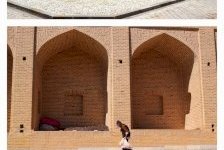
My initial reaction when I finally saw the inscribed properties under Persian Caravanserai was of wonder as to why the beautiful Aminoddoleh Timche in the grand bazaar of Kashan was not included. Its divine blue dome, an architectural marvel in its own right, could have easily been the poster photo of this batch. I managed to see three from this serial property: Bisotun, Kharanaq, and Meybod.
The inscribed area of Bisotun has two caravanserais, one is older than the other. The Mongol-period one in ruins (basically just the foundations) is attached to the remains of the unfinished Sassanid palace, directly beside a lovely traditional cafe housed in the old hospital building. The Sheik Ali Khan caravanserai much farther away is the one that got inscribed and it now houses the Laleh International Hotel. I went inside to check how it was retrofitted for present-day use and I even had my second serving of tea there (after having an earlier one at the cafe). The courtyard opens to the view of the Farhad Tarash.
Kharanaq is an old village along the Silk Roads that has a history of over 4,500 years. While the main attraction would be the crumbling mud citadel with an impressive mosque and shaking minaret, the caravanserai cannot be missed as it is the first monument to be seen upon entering the village. Travellers can arrange to stay overnight, which would be cheaper than staying at the one in Bisotun. It seems to appeal to backpackers …
Keep reading 0 comments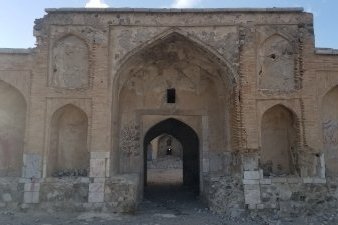
I visited many caravanserai in Iran. Some of them are new, basically pit stops for gas, food and repair your car, they often call them service station now though as you may expect. Some of the classic caravanserai are now guest houses or coffee shops. The classic ones are supposed to be for when the silk road camel “caravans” were passing through Persia and needed a place to rest and refresh. If you look on the map you can make out a line going west <> east. There are some caravanserai not included in this inscription request, most notably the one next to Cyrus' tomb, but an easy “tick” would be to see the one in Bisotun which is a one of those coffee houses now. I spent some time finding the ruined ones along the road but sometimes they are not easy to find, perhaps the road doesn't allow you to venture into the area next to the highway, it would be silly to go off-road with a sedan, but sometimes the ruins are just there in plain sight, unprotected unfortunately.
Taking Khaneh Khowrdeh as an example (romanization may vary) one can just take a road off the highway and you park right in front of it. There is no tourist sign, only a sign for what I believe is deterring vandalism. Graffiti is rife in and outside the walls. Gone are the camels and the new visitors, baaaaaaaaa, leave so much poo that it's not easy to …
Keep reading 0 comments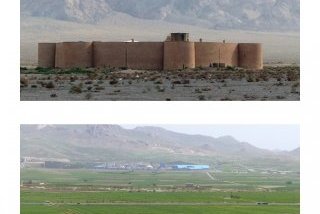
The Persian Caravanserai were only placed on the T List in Feb 2017 as part of a "mini update" which added a further 10 sites to Iran’s already enormous T List (currently 55)! Whether this implies imminent action to try for Nomination isn’t clear, but some of the locations are pretty easy to pick up whilst seeing existing Iranian WHS if travellers want to avoid missing out on a "future inscription"!
Assuming that is, that they survive any future "cut", since a slight problem is that the UNESCO site states that “in this file, there are 25 Caravanserais, from all over Iran under the name of Persian Caravanserais which are selected from hundreds of Caravanserais.” - and then lists what appears to be 32 locations!! I have just discovered and added coordinates to our T List map for 24 of them, augmenting the 3 identified when the site was placed on the T List – so 5 remain to be identified – “possibly”!!
Iran’s main highways are really very good – enormous “Dual carriageways” (UK English) or “Divided Highways” (US!). As you zip along, you will pass many, many Caravanserai. A fair number will be in ruins but others are operating as Hotels/Restaurants. I would recommend stopping to explore at least 1 ruined one – even if it isn’t among those on the T List.
It is interesting to note just how many along the highway have a modern Gas station /Restaurant located very close …
Keep reading 0 comments
